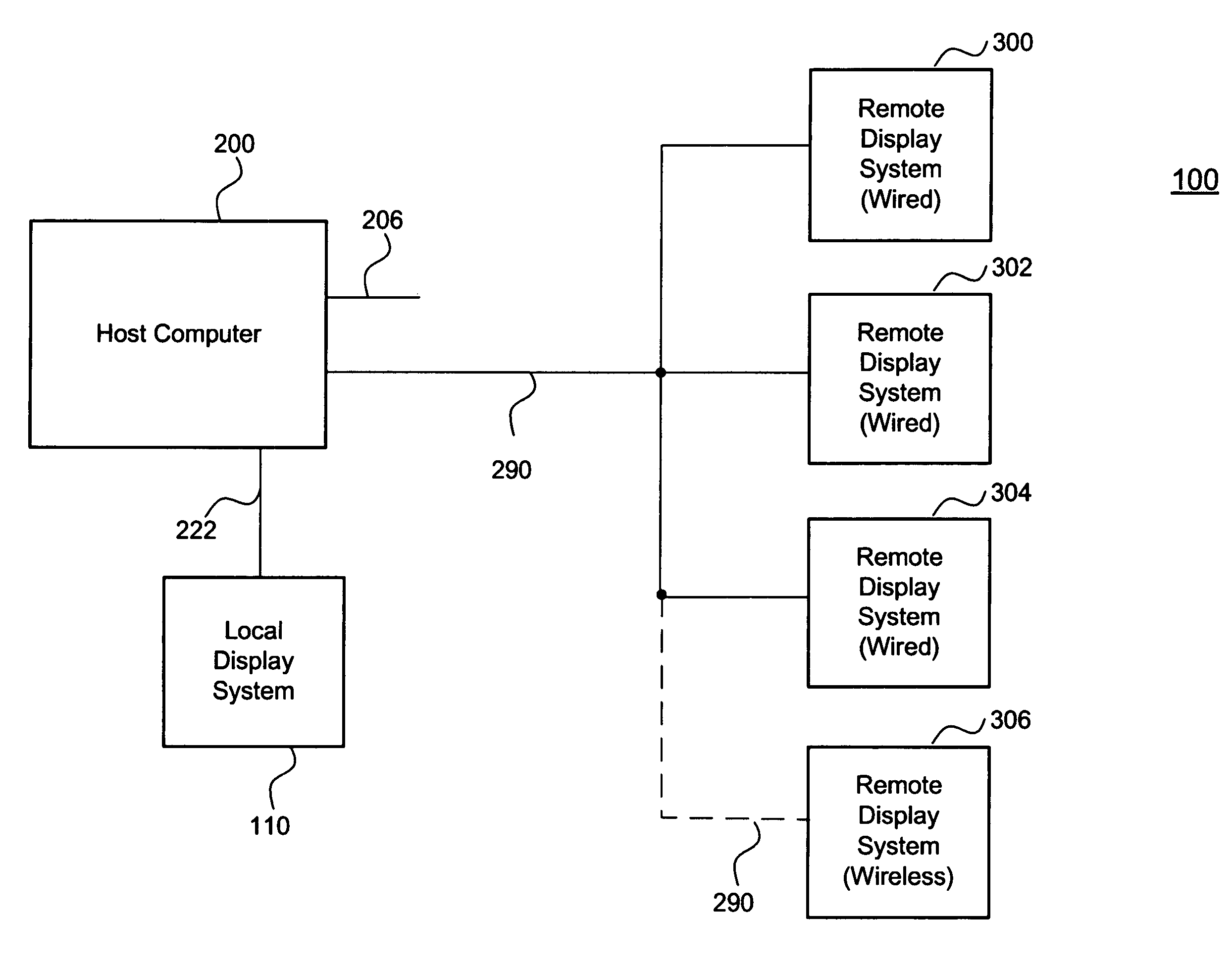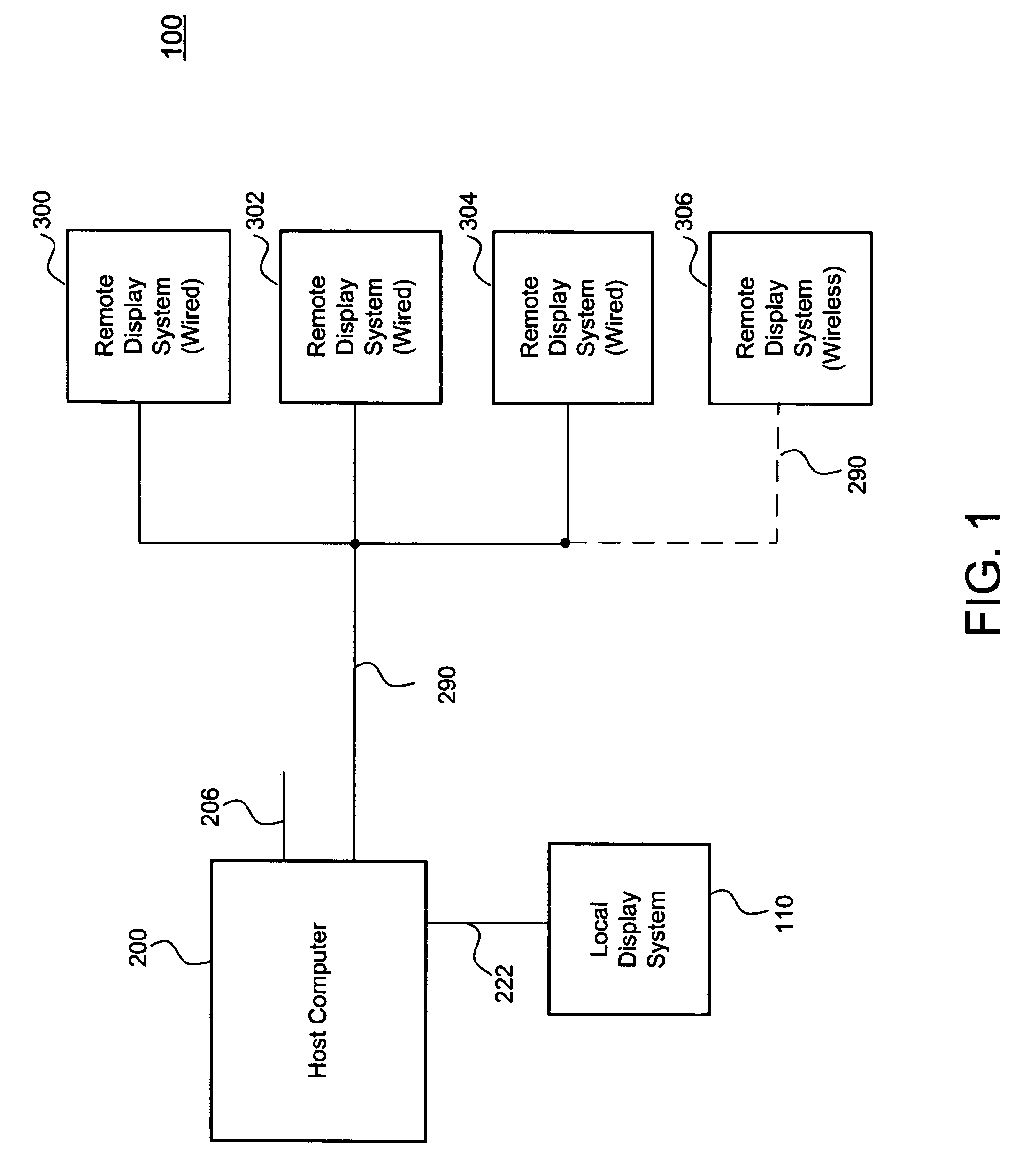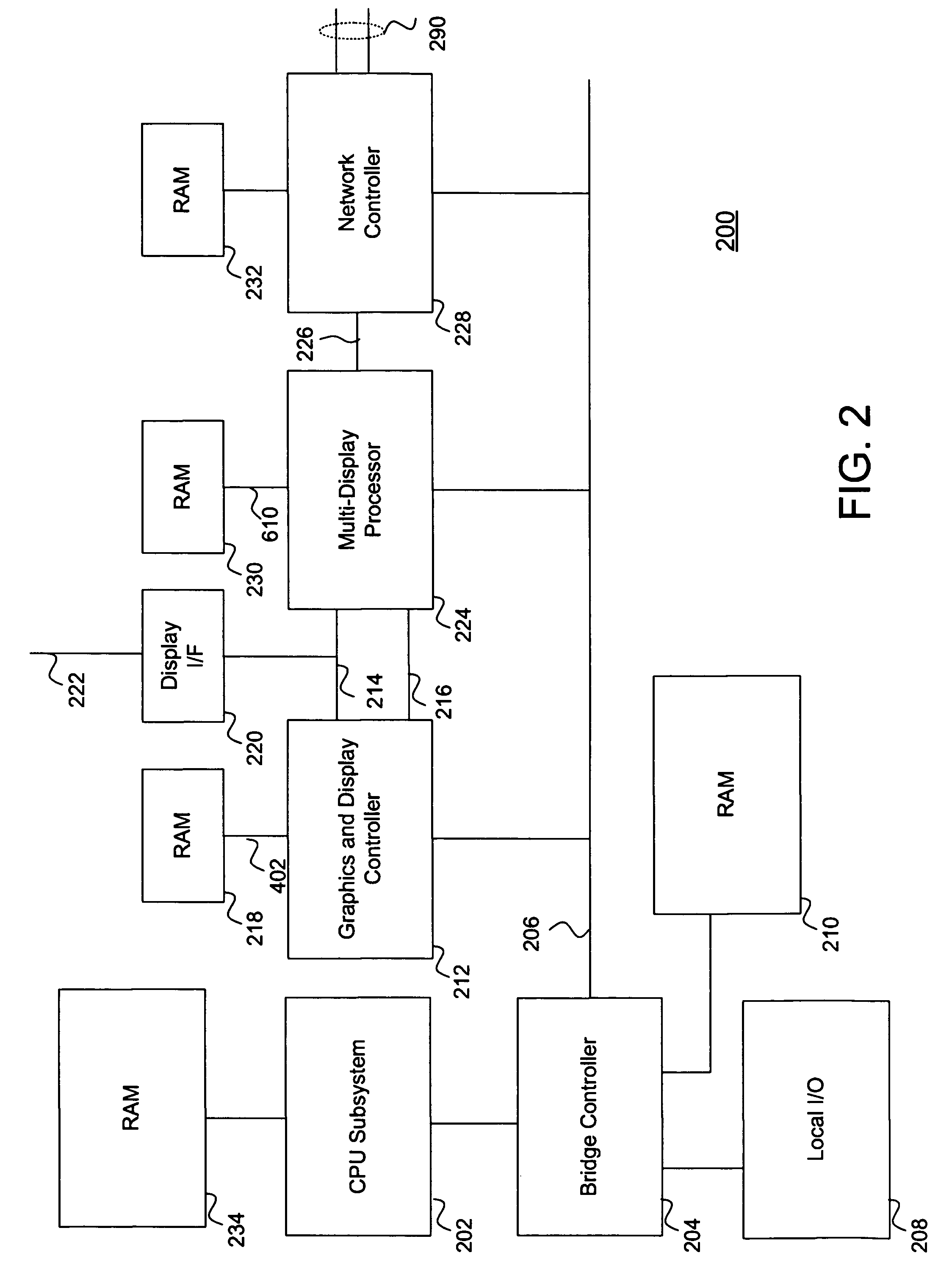Computer system for supporting multiple remote displays
a multi-display processor and computer system technology, applied in the field of multi-display processor systems, can solve the problems of remote display having to resort to ineffective means, affecting the efficiency of modern computer systems, and affecting the performance of dumb terminals, etc., to facilitate optimal system interoperability and functionality, facilitate optimal frame rate, and low latency
- Summary
- Abstract
- Description
- Claims
- Application Information
AI Technical Summary
Benefits of technology
Problems solved by technology
Method used
Image
Examples
Embodiment Construction
[0031]The present invention relates to an improvement in multi-display computer systems. The generic principles herein may be applied to other embodiments, and various modifications to the preferred embodiment will be readily apparent to those skilled in the art. Thus, the present invention is not intended to be limited to the embodiment shown but is to be accorded the widest scope consistent with the principles and features described herein. While the described embodiments relate to multi-display computer systems, the same principles and features could be equally applied to a multi-display television system.
[0032]Referring to FIG. 1, the invention provides an efficient architecture for a multi-display computer system 100. A Host Computer 200 processes multiple windows desktop environments, typically one for each display, and, besides supporting local display 110, produces display update network streams over wired network(s) 290 to each of remote displays 300, 302, 304, etc., or ove...
PUM
 Login to View More
Login to View More Abstract
Description
Claims
Application Information
 Login to View More
Login to View More - R&D
- Intellectual Property
- Life Sciences
- Materials
- Tech Scout
- Unparalleled Data Quality
- Higher Quality Content
- 60% Fewer Hallucinations
Browse by: Latest US Patents, China's latest patents, Technical Efficacy Thesaurus, Application Domain, Technology Topic, Popular Technical Reports.
© 2025 PatSnap. All rights reserved.Legal|Privacy policy|Modern Slavery Act Transparency Statement|Sitemap|About US| Contact US: help@patsnap.com



